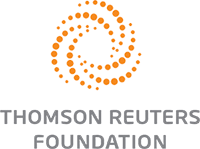- Decision Support Tools for Sustainable and Climate Resilient Agriculture: the case of Brazi
- Climate Change Impacts on Brazilian Agriculture to 2030
- Decision Support Tools for Sustainable and Climate Resilient Agriculture: the case of Brazil
- Climate Change Impacts on Brazilian Agriculture to 2030
Benefit sharing mechanisms determine the engagement of communities in REDD+. They require understanding beneficiaries, equitable transfer mechanisms, and measuring changes in emissions. PROFOR research on benefit sharing mechanisms helped develop tools and approaches that assist countries in identifying benefit sharing mechanisms that are well suited for their country context.
The Restoration Opportunity Assessment Methodology, developed by IUCN provides analytical input to national or subnational policies. It is designed to help address questions such as: Where is restoration socially, economically and ecologically feasible? What are the costs and benefits, including carbon storage, associated with different restoration strategies? Who are the stakeholders with whom we need to engage?
Geospatial modeling at scale via environmental favorability models using fuzzy logic combined with environment and anthropogenic co-variable allows the testing of hypotheses and designing of policy recommendations. This was illustrated by showing the results from recent research bushmeat availability and stunting in the Congo Basin.
The forum discussed the role of knowledge products and tools and how they are used by relevant stakeholders in achieving a more sustainable management of forests and forest resources at the landscape scale and within the framework of the post-2015 agenda.
The session focused on to Goal 15 “Protect, restore and promote sustainable use of terrestrial ecosystems, sustainably manage forests, combat desertification, and halt and reverse land degradation and halt biodiversity loss” as well as Goal 6, sub-goal 6 “by 2020 protect and restore water-related ecosystems, including mountains, forests, wetlands, rivers, aquifers and lakes”.
Presenter showed some of the tools developed within the framework of the DFID supported KnowFOR program, involving IUCN, PROFOR and CIFOR and explained how these tools can contribute to better managed landscapes and to the achievement of the SDGs.
Key questions addressed:
- What sort of knowledge products and tools are really useful?
- How can we improve the adoption of such tools?
- What could be their role in contributing to the achievement of the post-2105 agenda goals?
Background reading:




















